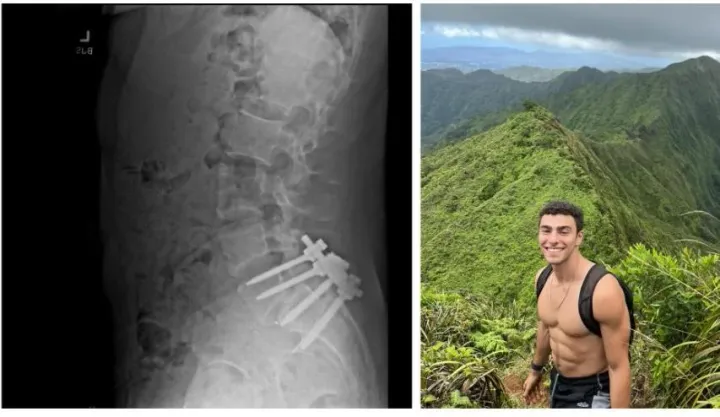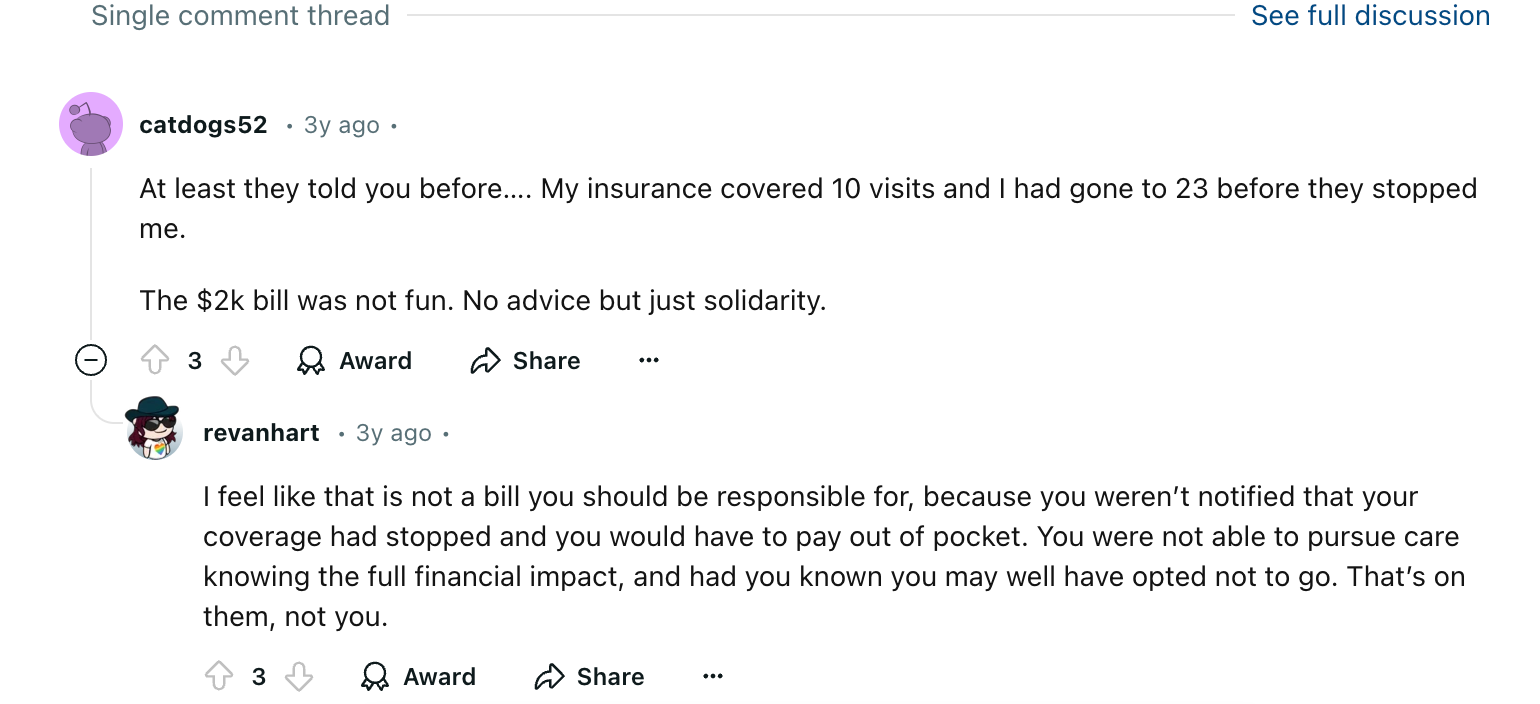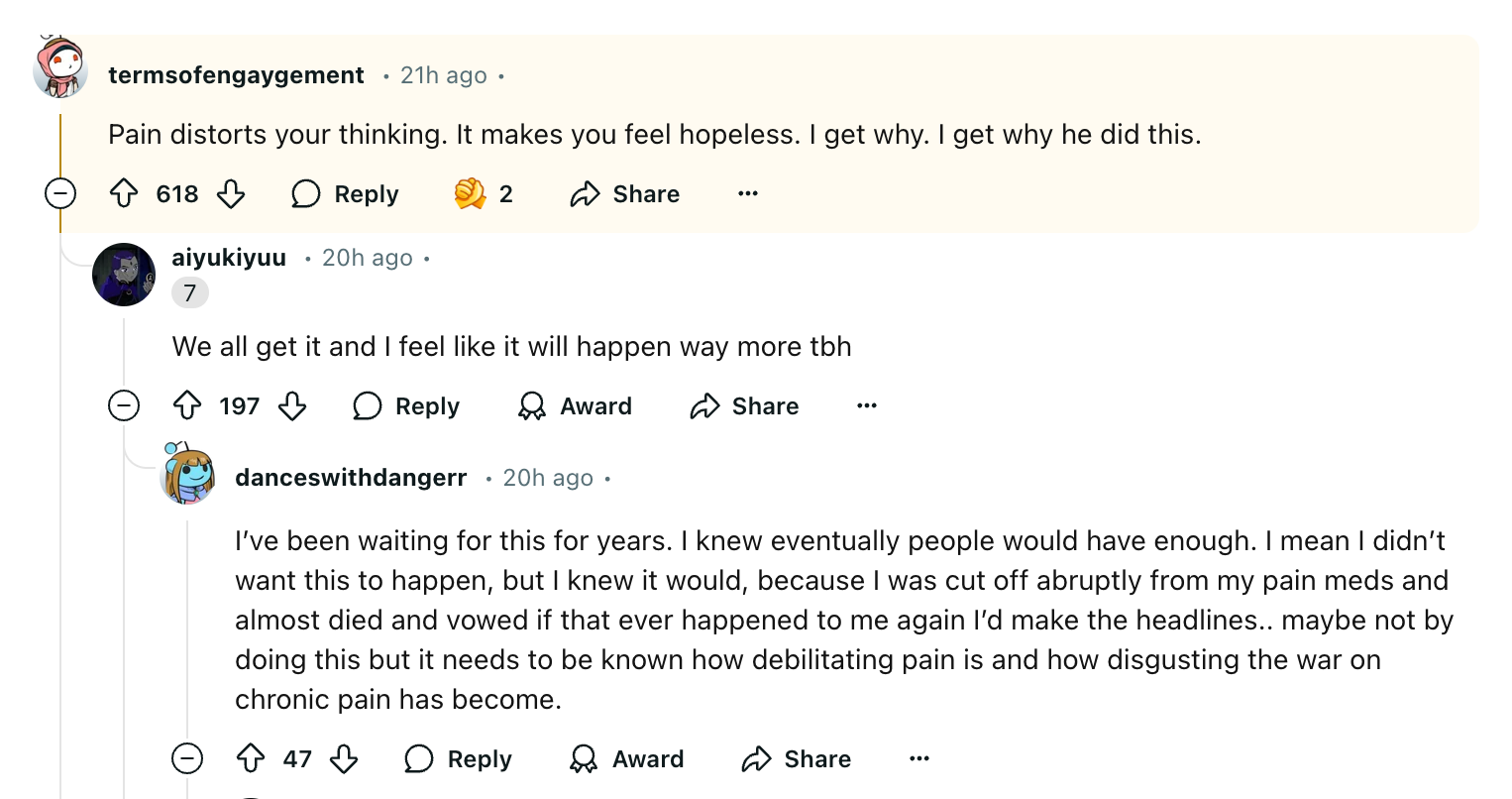The devil and Luigi Mangione

Luigi Mangione, the 26-year-old man who has been charged with the murder of a UnitedHealthcare CEO that occurred in the streets of New York on December 4, had an ample presence on many social media sites, one of which was Goodreads. His posts and taste in books reflect a mundane, even basic, set of interests typical for a certain type of fairly online Gen Z computer science guy, with a bent toward productivity/optimization: Andrew Huberman, Tim Ferriss, Joe Rogan. But he also left a Goodreads review for the longstanding weight-lifting text Bigger Leaner Stronger in 2019, in which he linked a Google Drive file containing his handwritten notes on the book. These notes detail a back injury that was a source of debilitating, chronic pain for Mangione, the ongoing treatment of which seems to have been one of the last significant events in his life preceding the shooting.
In the notes, Mangione writes about his condition, isthmic spondylolisthesis in his L5 vertebra, the very lowest disc in the lumbar spine that comes right before the tailbone. Specifically, Mangione notes his L5 disc has a “pars fracture,” or a stress fracture, which most commonly happens to children from doing repetitive stress movements like landing on their feet with an arched back.
As the notes state, many injuries of this type are pain- and symptom-free, and if the fracture is sustained as a child (as young as 5 years old, in some cases), it may not actually become painful until years later. The New York Hospital for Special Surgery notes this type of fracture is especially common in gymnasts, as well as soccer, basketball, and lacrosse players. Mangione writes that his L5 vertebra is also “slipped,” or herniated, such that it was pressing on his S1 nerve, which can cause sciatica (periodic leg numbness as well as pain or tightness in the hamstrings and calves).
Mangione lists in his notes the half-measures that are usually given for dealing with this type of pain: NSAIDs, heat or ice, a back brace that is not to be relied on long-term since it can encourage muscle weakness that will worsen the symptoms and increase his chance of further injury. Any physical therapy would focus on stretching the hamstrings to alleviate further pulling on the spine, but he writes that this would mostly only help with sciatic leg pain.
Based on the choice of book and notes, Mangione aimed to take control of his painful symptoms in part by lifting weights, with a focus on good form, in order to develop the muscles that would prevent muscle weakness from worsening the pain. He quotes a 2009 thread from the Starting Strength forums, in particular a response from Starting Strength author Mark Rippetoe (the book/trainer I first read when I started to lift):
I have coached a couple of people with a spondylolisthesis. The consensus amongst those of us that actually train these people -- as opposed to your doctor, who merely diagnoses it and then covers his ass -- is that flexion/extension exercises of the spine like situps and back extensions aggravate the symptoms, and exercises that hold the spine in normal anatomical position isometrically, like squats and deadlifts, are not only fine but necessary for stabilizing the injury. Presses will also have to be done carefully, but hey [sic] are important too. Obviously your form will have to be very good and any competitive powerlifting or weightlifting plans will have to be reevaluated, but I doubt seriously that you will benefit from the elimination of structural exercise from your training.
It’s worth noting also that even “good” health insurance plans can offer precious little in the way of help for debilitating pain like this outside of surgery. Often, coverage is capped at a certain absurdly low number of physical therapy sessions per year, as few as eight or 12, assuming one can find a provider that’s in-network. After a person runs through their covered sessions, they might leave physical therapy and hope to get relief by continuing to practice their assigned exercises. But customers can also get to the end of those sessions without relief, in which case they might find themselves spending thousands out of pocket on more sessions in hopes of eventually meeting a deductible.
Even worse, it’s not always clear to customers that only a limited number of sessions are covered. This means they might start physical therapy believing it’s covered and only requires a co-pay, only to get dozens of sessions in and find out they owe thousands of dollars more than they ever imagined they would, as in the case of this Reddit poster. It's not uncommon, either, for insurance companies to determine a doctor’s referral for physical therapy isn't “medically necessary,” such that coverage is refused only after the patient starts to attend PT appointments.

Information sourced from friends of Mangione whom he met in Honolulu in 2022 suggests that by the time he moved there, he was preparing for a “major” surgery the next year that he hoped would fix his back issues. “His spine was kind of misaligned,” one friend told the New York Times. “He said his lower vertebrae were almost like a half-inch off, and I think it pinched a nerve. Sometimes he’d be doing well and other times not.” Mangione told the same friend that “dating and being physically intimate with his back condition wasn’t possible.”
Posts to Reddit from an account belonging to Mangione suggest the surgery, a spinal fusion, worked at least in the short term, and he encouraged others to be optimistic about surgery’s possibilities. He also understood well how the medical establishment might try to avoid substantial treatment for problems like his. “Tell them you are ‘unable to work’/do your job,” he wrote. “We live in a capitalist society. I’ve found that the medical industry responds to these keywords far more urgently than you describing unbearable pain and how it’s impacting your quality of life.”
The cost of spinal fusion varies drastically between providers and states, but one insurer prices it in the range of $39,000-$53,000, before anesthesia and other costs. Mangione insinuates in his Reddit post at one point that doctors may demur at the possibility of doing surgery on a patient under the age of 40. “Nonsense coming from a medical professional who lacks perspective,” he wrote. “If your back is broken and it’s unlivable, age has nothing to do with it. Good surgeons understand this and will operate on your based on your symptoms + anatomy.” A photo in Mangione’s now-suspended Twitter profile showed an X-ray of a spinal fusion, juxtaposed with a smiling photo of Mangione himself.
When the friend followed up with Mangione to ask how the surgery went, Mangione replied “long story,” didn’t elaborate, and didn’t answer subsequent texts. A handful of unanswered public @-replies on Twitter in mid-2024 suggest that Mangione had similarly stopped responding to other close contacts in the year following.
A post on the r/ChronicPain subreddit notes the number of books that Mangione had appeared to read on chronic back pain. The thread is full of angry replies from commiserators describing their difficulty with getting treatment or relief for their own chronic pain, and especially the difficulties compounded by insurance companies:
My insurance has covered the lidoderm patches for over 10 years. This year they changed their tune and said now they only cover the patches for specific cancers. But I can buy them out of pocket. It's $140 for a box of 30. Now my pain is higher but pain MD won't increase my pain meds.
[UnitedHealthcare] screwed with my meds in 2017 after the cdc opioid guidelines. I had been on a stable dose for almost 2 decades. They force tapered me 50% and couldn’t decide on what I should be on so after 7 months of that, I developed uncontrollable high blood pressure, tachycardia and other things. Had to retire early and go on ssdi. I had uhc in my phone contact with a pic of the devil
I already had my opinions on the guy, but when I saw this I actually got emotional. He is only 1 year older than me and I suffer from chronic back pain that every doctor seems to think I am just making up because I’m too young. I’ve seen like a hundred doctors, including specialists, who all either belittle me or rule 1 thing out and kick me out of the office. I’ve heard “I dunno, just take a Tylenol” more times than I can count. My pain has spread from my muscles to my spine, and it continues to spread. I’ve left every single appointment about this issue crying. It’s cost my family thousands and thousands, and I don’t even have a goddamn diagnosis after 10+ years. Funnily enough I currently have UHC. I could never do what he did myself, but I have no sympathy for the man he killed.

Mangione has so far avoided drawing any explicit connection between his own personal health history and what happened to the UnitedHealthcare CEO. It would be an incredible leap to say that a health insurance executive was gunned down in the streets by someone at his wit’s end with enduring a painful and intractable injury that he tried to address responsibly, only to find that his debilitating pain might never be addressed. And that’s even before presumably learning that, if he did take on the Herculean task of coordinating more medical support with typical insurance coverage, it could cost him an unpredictable or even endless amount of money and time, not to mention yet more distress.
But it is possible to say, without further villainizing or valorizing Mangione himself, that this is a desperate situation that an increasing number of people of progressively younger ages face as they spend more time glued to desks in good-faith efforts to always be working, staying productive, optimizing, sacrificing their bodies (not to mention getting pressed into service as increasingly competitive athletes at younger and younger ages). They do all this only to find that the safety net they were promised would back up their commitment not only isn’t there, but is actually more like a spider’s web that will entangle them, causing only additional hurt, strife, and despair.







Member discussion